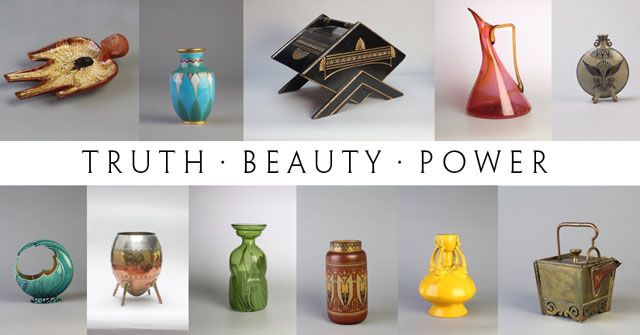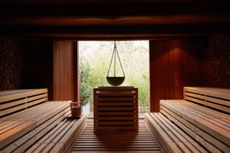The genius of Christopher Dresser
Huon Mallalieu revisits the brilliant Christopher Dresser's career

In 1898 The Studio magazine described Christopher Dresser (1834–1904) as ‘perhaps the greatest of commercial designers, imposing his fantasy and invention upon the ordinary output of British industry… [he raised] the national level of design not by producing costly bric-à-brac for millionaires but by dealing with products within the reach of the middle classes and perhaps the masses themselves’. Even though The Studio’s founder and editor was Charles Holme, Dresser’s friend and former business partner, the assessment is fair.
As with most great Victorians, Dresser’s reputation plummeted after his death in 1904 and he was virtually forgotten by the 1930s, when Nikolaus Pevsner began his rehabilitation: ‘This makes the two works illustrated all the more astonishing. In comparison with the silver of the 1851 Exhibition and actually with most designs for silver before 1900 or 1905, Dresser’s simplicity and creative daring are likewise significant.’
In 1952, he featured prominently in the V&A’s revisionary ‘Victorian and Edwardian Decorative Arts’ show, after which the decorative arts dealers John Jesse and Richard Dennis took up the torch, mounting Dresser exhibitions with Andrew McIntosh Patrick of the Fine Art Society in 1972 and 1990. Nowadays, he is probably as highly regarded as he was at the peak of his career and examples of his most striking designs sell for many thousands, but I am constantly surprised at how modestly priced other Dresser items can be.
This is probably because he spread his talent so widely, designing ceramics, silver, other metalwork, glass, textiles, wallpapers and furniture, bringing the Japonisme fashion to Europe and the USA and virtually inventing the concept of the interior decorator.
While still in his twenties, he was a contender for the Chair of Botany at University College London and, later, he held professorships at several London institutions. He was a Fellow of the Linnean Society and was awarded his doctorate by the University of Jena, which had the finest botanical faculty in Europe. In The Art of Decorative Design, 1862, he wrote: ‘The designer’s mind must be like the vital force of the plant ever developing itself into forms of beauty.’ He certainly lived by that precept.
Dresser provided designs for some 60 companies. Among the most notable were Wedgwood, Minton and the Ault and Linthorpe potteries; James Couper (Clutha Glass); Coalbrookdale, Elkington, Hukin & Heath, James Dixon & Sons and Benham & Froud (metals); Liberty (textiles), Crossley (carpets) and Sanderson and Zuber (wallpapers). In 1880, Dresser founded the Art Furnishers’ Alliance (AFA), opening premises at 157, New Bond Street the following year.
The ethos of the enterprise was a blend of aesthetic ‘greenery yallery’ and Japonisme and its aim to promote what a critic called the ‘Japanese Mania’. As The Artist and Journal of Home Culture enthused: ‘The critical eye is that of Dr C Dresser, and without recognising the possibility, or desirability, of a pope in the matters of taste, we may unreservedly say that there is no one whose knowledge and taste we would rather trust.’ Alas, a combination of recession and being ahead of public fashion closed the AFA in 1883.
Sign up for the Country Life Newsletter
Exquisite houses, the beauty of Nature, and how to get the most from your life, straight to your inbox.
Although Dresser had published his theories earlier, William Morris had preceded him in going into business to supply art for the masses. Many of their principles tallied, but Morris, in looking back to medieval craftsmanship rather than welcoming ‘the perfection of machinery and the greatness of our mechanical skill’, never matched Dresser’s outpouring of designs for mass production.
The Fine Art Society, almost next door to the site of the AFA’s shop, is mounting a series of selling exhibitions drawn from the Victorian and Belle Epoque collections built up by John Scott since the 1960s. A collector, unlike a retailer, benefits by being ahead of fashion and Mr Scott was early in the field, particularly with Dresser, subject of the current show. His enjoyment and enthusiasm, expressed in personal comments following the descriptions, enhance the catalogue and the 202 items demonstrate how justified he is in his admiration for the versatile doctor. They are beautiful and constantly surprising.
‘Truth Beauty Power: the Designs of Dr Christopher Dresser’ is at the Fine Art Society, 148, New Bond Street, London W1, from September 11 to October 2 (020–7629 5116; www.faslondon.com)
-
 How to disconnect from reality and feel like a new person in under 72 hours
How to disconnect from reality and feel like a new person in under 72 hoursOur round-up of the best British retreats that work wellness wonders in under 72 hours.
By Jennifer George Published
-
 Evenley Wood Garden: 'I didn't know a daffodil from a daisy! But being middle-aged, ignorant and obstinate, I persisted'
Evenley Wood Garden: 'I didn't know a daffodil from a daisy! But being middle-aged, ignorant and obstinate, I persisted'When Nicola Taylor took on her plantsman father’s flower-filled woodland, she knew more about horses than trees, but, as Tiffany Daneff discovers, that hasn’t stopped her from making a great success of the garden. Photographs by Clive Nichols.
By Tiffany Daneff Published